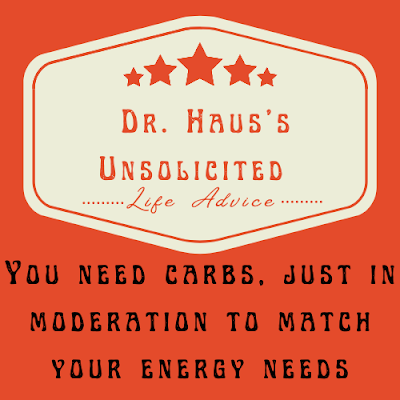Carbohydrate Metabolism
Carbohydrate metabolism refers to how the body breaks down, stores, and uses carbohydrates. Carbohydrates are one of the four major sources of food and energy in a living organism. Carbohydrates are the building blocks found in foods that the gastrointestinal organs (stomach, liver, intestines, etc.) need to break down, process, use, and store to allow the organism to survive.
🥖
When a meal is being digested, the body works to break down the carbohydrates into their smallest functional form called monosaccharides. The majority of this digestion happens in the small intestines and the small intestines is the main location where the monosaccharides are absorbed into the body.
🍝
Glucose is the major monosaccharide that needs to remain in a homeostatic range in the bloodstream. Homeostatic range is the value range a specific parameter must stay within to keep an organism healthy. In the case of glucose, glucose concentrations HIGHER than the homeostatic range have severe negative consequences in an organism. Glucose concentrations LOWER than the homeostatic range equally have severe negative consequences in an organism. In a normal, healthy organism, the body works VERY HARD to maintain a parameter within its homeostatic range for optimal body functioning and health.
🍉
Glucose is a large and charged molecule that cannot move freely from the inside of the small intestines into the body and thus it relies on facilitated diffusion to be absorbed into the organism. Facilitated diffusion is where a molecule needs help from a protein to move through the plasma membrane into the cell. You can think about this like a tunnel that is only opened for the correct traveler. A glucose transport protein will transport glucose DOWN its concentration gradient. In the case of the body breaking down food after a meal, the concentration gradient "makes" the glucose want to move into the body and the glucose transport proteins help the glucose move from the small intestines into the body's bloodstream.
🍐
Now, these glucose transport proteins are not always open (except for a variety in the brain, but that is a different blog post). The signal that tells the glucose transport proteins that they can open to let the glucose pass is insulin. WITHOUT INSULIN, THE BODY CANNOT ABSORB GLUCOSE INTO THE CELLS. This is very important because EVERY cell in the body needs glucose to provide it the energy it needs to survive.
🥗
The beta cells in the islets of Langerhans of the pancreas produce and release insulin into the bloodstream. In a normal, healthy organism, insulin will increase shortly after a meal is eaten to allow the absorbed glucose to go from the bloodstream into the cells providing them the energy they need to survive.
🍚
The opposite of insulin in the body is glucagon. Glucagon is produced in the alpha cells in the islets of Langerhans of the pancreas to counteract the effects of insulin. Insulin DECREASES the glucose concentration in the bloodstream by opening the glucose transport proteins so glucose moves INTO the cells of the body. Glucagon INCREASES the amount of glucose in the bloodstream by causing the body to break down its energy stores to release glucose into the bloodstream. This yin and yang process allows for the glucose concentration to remain in the homeostatic range and prevents fluctuations of glucose in the bloodstream.
🌽
When glucose is absorbed into the body it will be used in one of three different ways:
- Used immediately to produce energy for the cells (body)
- Stored as glycogen (a quick energy source stored in large concentrations in the muscles and liver)
- Stored as fat for later use
Remember, without glucose in the correct concentration in the bloodstream an organism won't be able to survive very long!



No comments:
Post a Comment